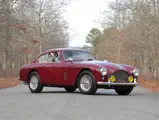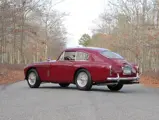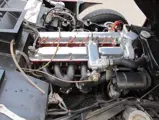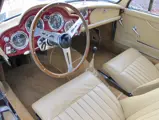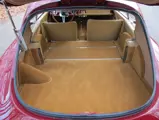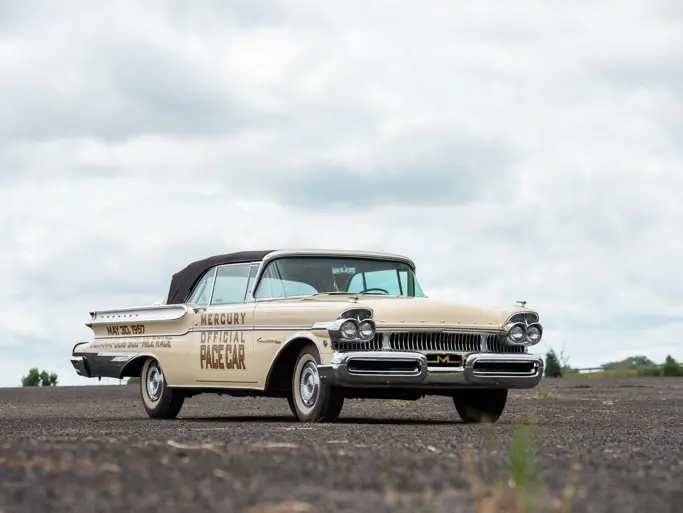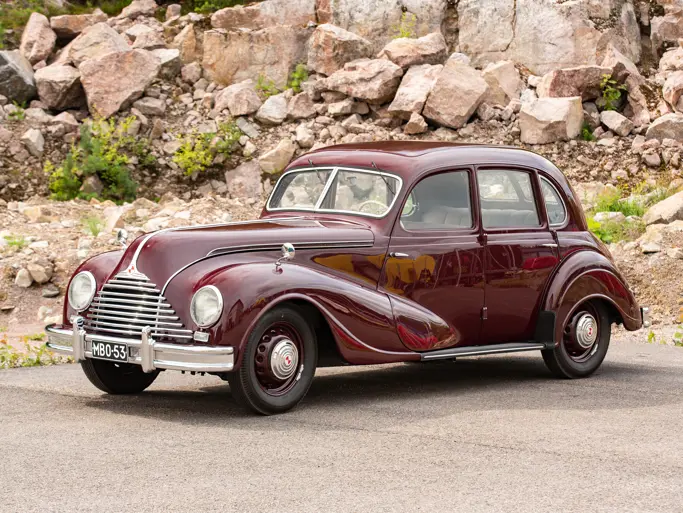Salon Privé
1959 Aston Martin DB Mark III Coupé
{{lr.item.text}}
£89,600 GBP | Sold
 | United Kingdom
| United Kingdom
{{internetCurrentBid}}
{{internetTimeLeft}}

178 bhp, 2,922 cc DBA DOHC inline six-cylinder engine, twin SU carburettors, four-speed manual gearbox, independent front suspension with coil springs, trailing links and anti-roll bar, independent rear suspension with live rear axle, coil springs, radius rods and Panhard bar, and front disc, Alfin rear drum hydraulic brakes. Wheelbase: 99"
- One of 551 examples built from 1957-1959
- An original LHD, US-delivery car, sold new in California
- Matching-numbers DBA engine; complete with copy of Aston Martin build sheet
Launched in 1949, David Brown’s Aston Martin DB2 was the first to feature the W.O. Bentley-designed twin-cam, 2.6-litre six-cylinder Lagonda engine, which would power all Astons for the next ten years until the introduction of the DB4. The DB2 made quite an impression at international auto shows and in competition, finishing first, second and third in class at the 1951 Le Mans 24 Hours and third overall against the likes of Jaguar’s purpose-built C-Type.
In 1953, this gentleman’s sports car grew into a four-passenger saloon, the DB2/4, followed by the Drophead Coupé and ‘notchback’ Fixed Head Coupé variants. By 1954, a new 3.0-litre, 140-hp engine was announced, and in 1955, the revised Mk II was introduced at the London Motor Show.
The DB2/4 Mk II continued through early 1957, when the Mk III (marketed as the DB Mark III) supplanted it. The upgraded DBA-specification engine provided up to 178 horsepower with the optional dual-outlet exhaust. Detail refinements enhanced the exterior, and a redesigned instrument panel (mimicking the contours of the new grille shape inspired by the legendary DB3S sports racers) now placed all gauges directly in front of the driver. Girling front disc brakes became available, and transmission options included Laycock de Normanville electric overdrive as well as a Borg-Warner automatic gearbox. The Mk IIIB of 1958 and 1959 was the final expression of the basic DB 2/4 concept, with front disc brakes now standard and the tail treatment upgraded with the attractive ‘cathedral tail lights’ which carried over to the DB4.
In popular culture, while the later DB5 is most often associated with James Bond, Ian Fleming’s original novel Goldfinger actually had 007 driving a DB Mark III. In fact, the DB Mark III was the only car in Fleming’s series of books to be equipped with the “Q-Branch” lethal gadgets that legions of Bond fans continue to associate with Aston Martin today.
According to a copy of its original build sheet, this original left-hand drive example from 1959 was factory-equipped with a hydraulic brake booster, fully chromed road wheels, polished Alfin rear brake drums and a locking glove compartment lid. It was delivered new via Charles Hornburg to its first owner, Mr. G.A. Irving, of South Gate, California. Today, it retains the matching-numbers engine, numbered DBA/1336, and performance is enhanced by approximately ten percent by the dual-outlet exhaust system. The exterior is finished in burgundy and remains in nice condition. This is an older repaint, however, with some flaws apparent under close examination. The engine bay could benefit from freshening, but it does sport the proper toolbox, which is correctly affixed to the scuttle, and the serviceable tan leather interior is set off by an attractive wood-grain steering wheel.
Just 551 DB Mark IIIs were built during a relatively brief production run spanning from 1957 to 1959, including one purpose-built competition model. With their hand-built, ‘Feltham-era’ quality, gorgeous design and satisfying driving dynamics, these DB Mark IIIs are highly coveted. Lovely examples such as this – in left-hand drive with U.S. West Coast origins – are among the most desirable of the breed.

